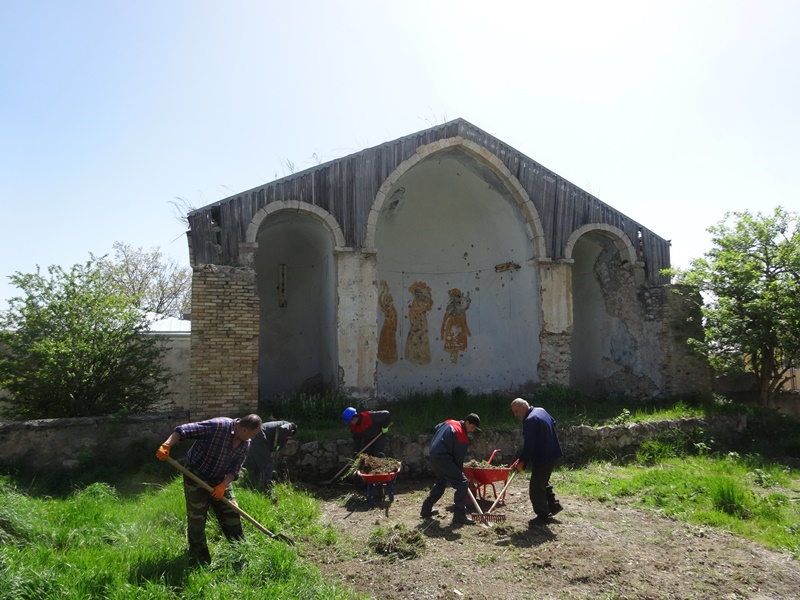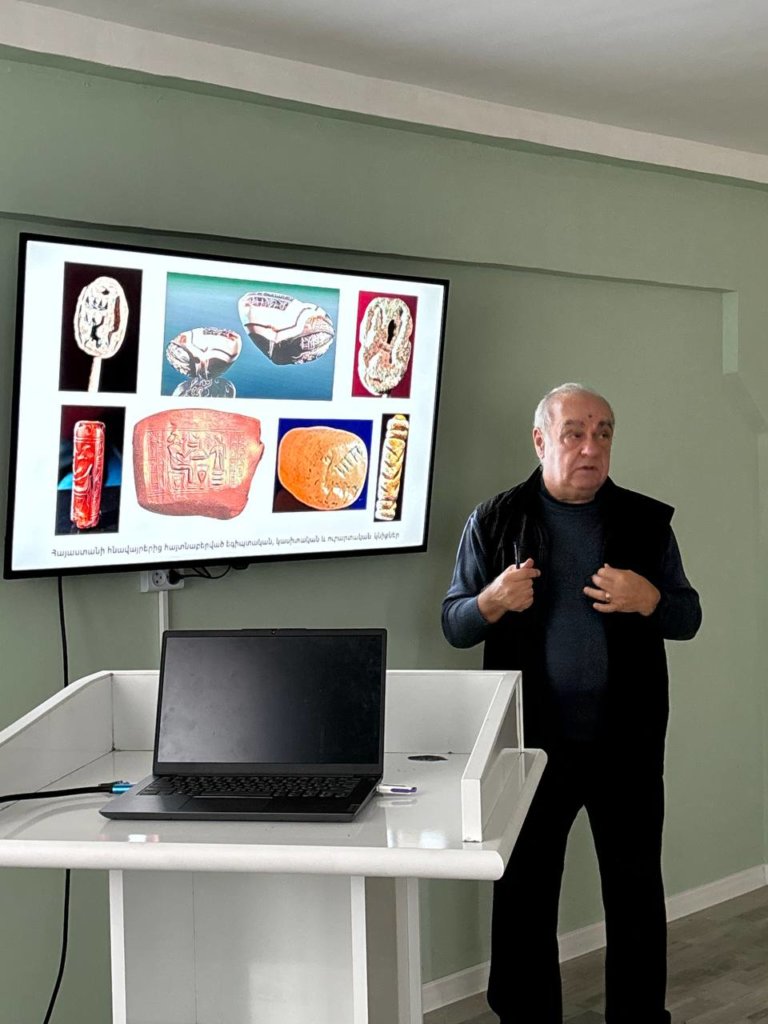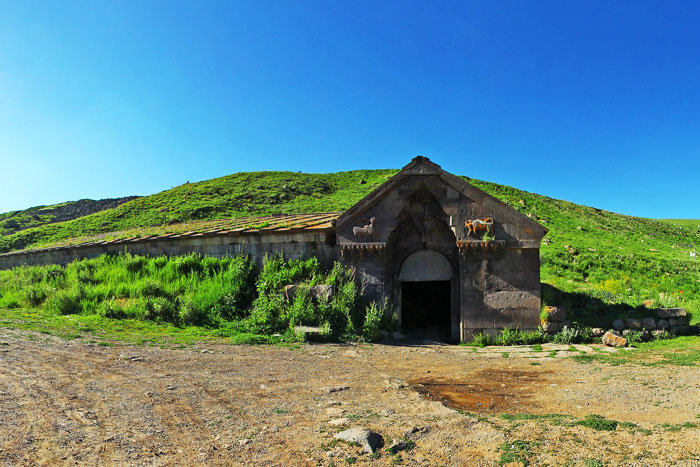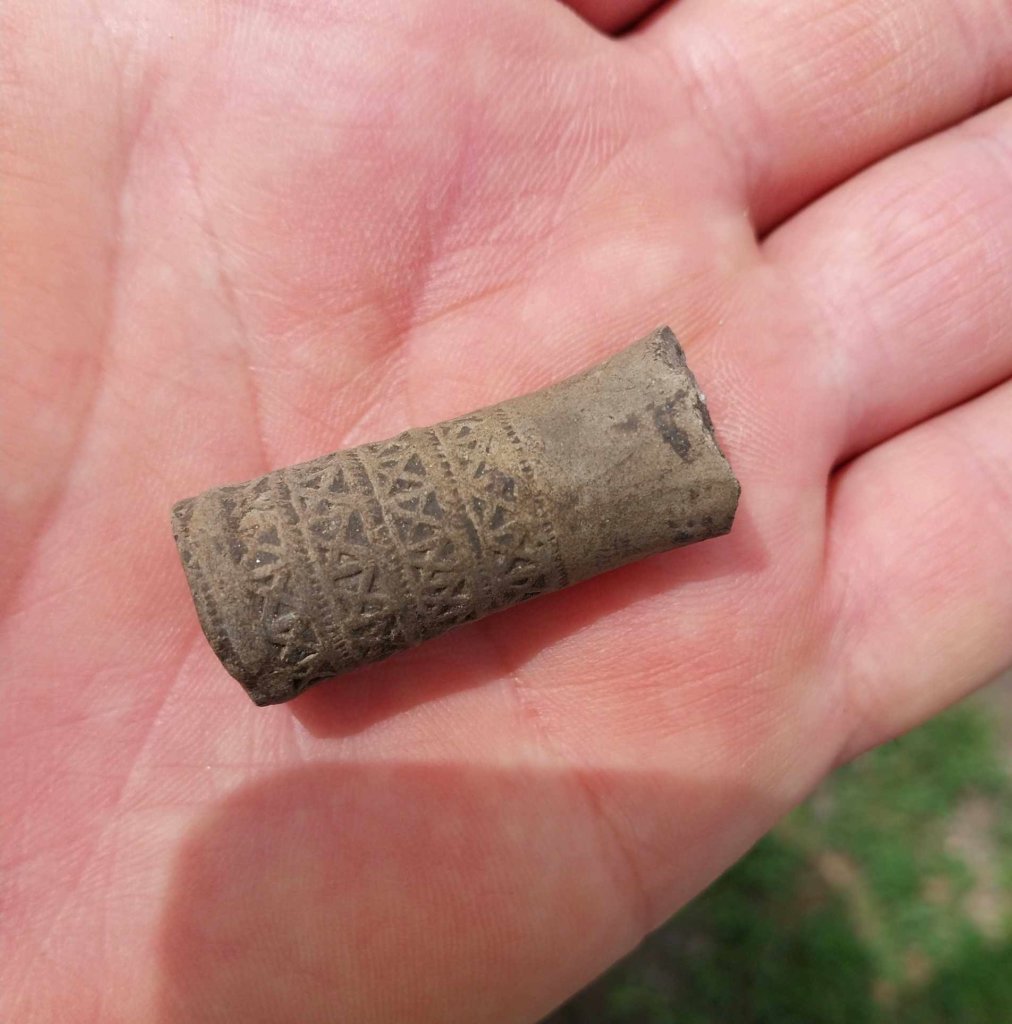Excavations were held in the territory of Shushi’s Holy Savior church from May 10 to June 5 by the Ministry of Economics of the Republic of Artsakh’s “Protection Service” NCSO’s archaeological expedition. The head of the expedition, deputy director of NCSO Njdeh Eranyan mentioned that as a result of the expedition the basis of the church have opened. “We had information about the fact that after wrecking the foundations of the church have been preserved and to find out the latter excavations were implemented. Historical details about the church have been told by bishop Makar Barkhudaryanc. The foundations were found during the excavation, which is up to 1 metres in some parts. The two entrances have also been found from northern and southern sides as well as the basis of one of the 4 pillars. This all comes to prove all the details about Holy Savior church which have been transferred to us”.
According to historical sources the church was built in 1883 by Mahtes Haxumyan’s initiatiave in Shushi. This was told by bishop Makar Barkhudaryanc who is famous for his invest in the researches of Artsakh’s Armenians’ history, lisestyle and cultural-historical monuments.
In the 1960’s there used to be a cinema in the place of the church (the southern part was probably used as a screen) and was used as a pastime area for the visitors and tourists. The altar and the stage have also been preserved. The church tower was three-storeyed and there was another belltower in the middle of the church roof.
The prayer-hall of the church had a rectangular volume composition. It had two doors from northern and southern sides and 10 windows. There was also an inscription on the front stone about the construction of the church.
According to Njdeh Eranyan the inscription has not been found during the recently implemented excavation, only one of the columns was found, but the foundations are the proof of the fact that they belong to Shushi’s Holy Savior church.
As a result of these excavations, the number of Shushi’s historical monuments is reinforced with one more important cultural-historical monument.







